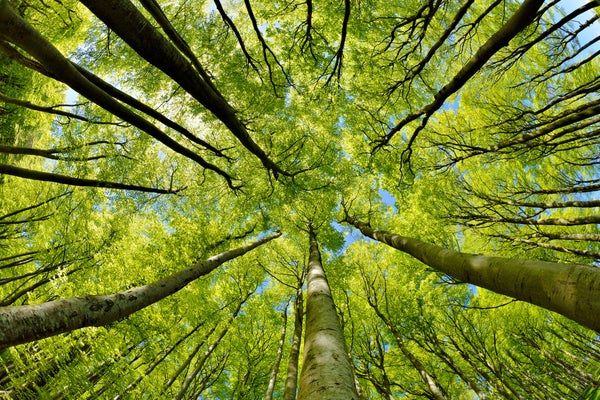CLIMATEWIRE | Countries around the world have turned to natural carbon sinks such as forests and wetlands to help them achieve their climate targets. The thinking is that these landscapes naturally soak up carbon dioxide from the atmosphere and so can cancel out ongoing emissions from fossil fuels.
But that kind of approach is a mistake, say some of the world’s leading scientists in a new study. And it could jeopardize the Paris Agreement’s vulnerable climate goals.
Because carbon dioxide lingers in the atmosphere for decades, forests and other natural carbon sinks are still absorbing emissions released by humans years ago. And that carbon doesn’t stay in the ground forever, either. It becomes part of the Earth’s natural carbon cycle, eventually escaping back into the atmosphere when the trees die before eventually being reabsorbed again by some other natural landscape.
On supporting science journalism
If you're enjoying this article, consider supporting our award-winning journalism by subscribing. By purchasing a subscription you are helping to ensure the future of impactful stories about the discoveries and ideas shaping our world today.
It’s all part of a giant natural equilibrium. But the system only stays in balance as long as emissions from human sources wind down to zero. If humans depend on natural carbon sinks to balance out ongoing future emissions, the world will just keep on warming.
That’s the stark conclusion of the study published Monday in the scientific journal Nature.
“We are already counting on forests and oceans to mop up our past emissions, most of which came from burning stuff we dug out of the ground,” said lead study author Myles Allen, a climate scientist at the University of Oxford, in a statement. “We can’t expect them to compensate for future emissions as well.”
Countries around the world have submitted carbon-cutting pledges to the United Nations in an effort to meet the Paris Agreement’s two key climate targets: keeping global warming well below 2 degrees Celsius and if possible less than a more ambitious 1.5 C.
Scientists warn that global emissions must reach net zero by midcentury for the world to even keep close to the 1.5 C target — meaning that any carbon going into the atmosphere must be balanced by the same amount of carbon coming back out.
But those offsets need to be permanent, the scientists say — and they shouldn’t come from sources that are already part of the natural carbon cycle. To actually halt global warming, world leaders must offset any residual fossil fuel emissions by capturing that carbon and sequestering it in geological reservoirs underground where it can’t escape.
It’s a concept the authors refer to as “geological net zero” — and it’s becoming more urgent, they say.
The problem hinges on the rules of the Paris Agreement, which doesn’t require countries to separate passive carbon sinks, such as forests, from their net-zero targets. Many nations already have begun using these natural landscapes in their net-zero accounting systems, suggesting that the forests inside their national boundaries are offsetting some of their fossil fuel emissions.
The study notes that more than 6.5 billion metric tons of carbon dioxide from passive carbon sinks every year are classified as carbon removals in the national emissions inventories that countries submit to the United Nations. That means world leaders are using them to count against their fossil fuel emissions, helping them reach net zero faster.
The system doesn’t have to work this way.
Take the Kyoto Protocol, a U.N. climate treaty adopted in 1997. The agreement failed to meet its climate targets but had some useful provisions, the study authors note. The agreement discouraged nations from using passive carbon sinks, such as forests, in their emissions accounting systems.
The new study suggests the problem with the Paris accounting system needs broader awareness.
“Achieving and maintaining ‘net zero’ emissions under accounting rules that allow passive CO2 uptake to count as CO2 removal will only slow down global warming,” the authors said.
Reprinted from E&E News with permission from POLITICO, LLC. Copyright 2024. E&E News provides essential news for energy and environment professionals.
